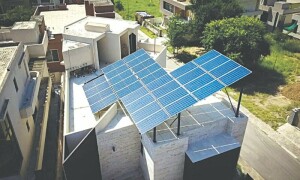The next fiscal year, beginning July 1, will be a tough year for both the Ministry of Finance and the State Bank of Pakistan (SBP). It may be tougher than the current year, ending June 30, if the International Monetary Fund (IMF) decides to delay its approval of a balance of payment support programme or if friendly countries do not make further bilateral loans to Pakistan.
While interest rates remained high yet stable and the rupee remained largely firm this fiscal year, the stability of both will be tested in FY25. The interest rate may gradually fall, but the pace of decline will remain dependent upon the central bank’s ‘inflation targeting’ — its ultimate objective of containing headline inflation to the medium-term target of five per cent to 7pc by September 2025.
The size and timing of the IMF loan, plus prospects of foreign funding by friendly countries, will decide the fate of the rupee. National average headline inflation has eased significantly — down to 11.8pc in May from 17.3pc in April —brightening the prospects of a cut in the SBP’s high policy rate of 22pc.
However, since core inflation (minus food and energy prices) is still higher than consumer price inflation, particularly in rural areas, the SBP may not opt for a risky, large cut in the interest rate. This may refuel inflationary pressures after energy price hikes scheduled from July, particularly if a dramatic change in geopolitical conditions in the Middle East also reverses the recent downward trend in global oil prices.
The size and the timing of the IMF loan, along with prospects of foreign funding by friendly countries, will decide the fate of the rupee
The rupee, currently trading around Rs280 per dollar, is set to lose some value even before the close of the fiscal year on June 30 because the IMF wants to see the exchange rate become truly market-driven.
The rupee’s relative recent strength may have resulted from the central bank selling dollars in the interbank market. Import restrictions have also helped the central bank achieve this objective. The Ministry of Finance and the IMF differ widely on the projections about the rupee-dollar parity as well, with the former convinced that the rupee should lose only 5.3pc of its value and the latter estimating up to 16pc depreciation.
This large gap between projections about exchange rates is important from the viewpoint of preparing realistic budget estimates, as the presumed future value of the rupee affects all projections about the cost of external debt servicing in rupee terms and the exact needs for resource mobilisation.
But, what is more important is that while the government wants to see the dollar below the Rs280 level before the end of the fiscal year, the IMF wants the exchange rate to be made truly market-driven right now as Pakistan negotiates a loan from the Fund; if that means a sizable depreciation in the rupee value before June 30, so be it.
That is where the central bank principally agrees with the IMF. But it is also mindful of the havoc that a sizable rupee depreciation before June 30 can play with the economy and how seriously it can affect the Pakistan-specific ‘normal coordination’ between the finance ministry and the SBP. What eventually prevails should become clear this week after the presentation of the budget for FY25.
If the central bank goes for rate reduction — and most analysts say it will — at its June 10 monetary policy committee meeting, that will come at a cost. Depending upon the size of the rate cut, the rupee would decline too, unless something dramatic happens. That is written on the wall; the rupee has remained overvalued for some time, and it is time for a correction in its value as the IMF has demanded.
Interest rates and exchange rates normally remain in a love-hate relationship, particularly in countries like Pakistan where fiscal discipline remains loose, government borrowings from banks crowd out the private sector, and the country’s balance of payments always keeps crying for bailouts.
What often happens in Pakistan’s case is that once the central bank begins tightening the interest rates, hoping to contain inflation, fewer than required checks on fiscal imbalances and weaker implementation of administered prices make the central bank’s task trickier.
It is then compelled to administer a ‘double dose’ of tightening that stunts economic growth, and finally, after a long while, inflation starts easing, largely due to demand contraction, and the SBP goes for monetary easing.
However, during the period of demand contraction (and resultant economic slowdown), the external sector’s need for foreign funding also increases, and it opts for further foreign borrowings that eventually increase the cost of external debt servicing.
This leaves the government with no other choice but to introduce import restrictions to ward off the immediate impact of the external borrowings on the exchange rates. All this we have seen in the recent past.
With the way things are going, the situation could result in something like this: the SBP will lower interest rates to boost economic growth, but since that is not possible without allowing import liberalisation, import bills will shoot up and the rupee will start depreciating.
We may see a higher economic recovery in the next fiscal year (3.6pc is projected by the government) with the help of falling interest rates, but the rupee’s expected decline would continue simultaneously. This would increase the cost of external debt servicing in rupee terms, exerting extra pressure on the government for resource mobilisation, and will also keep Pakistan dependent on the IMF and friendly countries for external funding.
Let’s see if the budget for the next fiscal year offers anything that may help the country break free from the vicious cycle.
Published in Dawn, The Business and Finance Weekly, June 10th, 2024














































